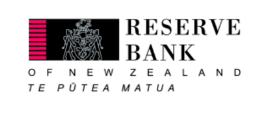Official Cash Rate increased to 5.25 percent
The Monetary Policy Committee today increased the Official Cash Rate (OCR) by 50 basis points, from 4.75 percent to 5.25 percent.
The Committee agreed the OCR needs to increase, as previously indicated, to return inflation to the 1-3 percent target range over the medium term. Inflation is still too high and persistent, and employment is beyond its maximum sustainable level.
The level of economic activity over the December quarter was lower than anticipated in our February Monetary Policy Statement and there are emerging signs of capacity pressures in the economy easing. However, demand continues to significantly outpace the economy's supply capacity, thereby maintaining pressure on annual inflation.
The recent severe weather events in the North Island have led to higher prices for some goods and services. This higher near-term CPI inflation increases the risk that inflation expectations persist above our target range.
Over the medium term, the Committee anticipates economic activity to be supported by rebuilding efforts in the aftermath of the weather events. The demand on resources is expected to add to inflation pressure by more than assumed in the February Monetary Policy Statement.
Global growth is expected to be below average, contributing to lower demand for New Zealand’s key commodity exports. Continued growth in New Zealand’s service exports, in particular tourism, is assumed to provide some offset to this drop in export revenue.
New Zealand’s economic growth is expected to slow through 2023, given the slowing global economy, reduced residential building activity, and the ongoing effects of the monetary policy tightening to date. This slowdown in spending growth is necessary to return inflation to target over the medium-term.
The Committee agreed that the OCR needs to be at a level that will reduce inflation and inflation expectations to within the target range over the medium term. The Committee agreed that maintaining the current level of lending rates for households and businesses is necessary to achieve this, along with a rise in deposit rates. New Zealand’s financial system is well positioned to manage through a period of slower economic activity.
Monetary Policy Committee Record of Meeting
The Monetary Policy Committee discussed developments affecting the outlook for inflation and employment in New Zealand. On balance, recent data, including a fall in GDP in the December 2022 quarter, suggest the level of economic activity is lower than assumed in the February Statement. Committee members observed that inflation is nevertheless still too high and persistent, and employment is beyond its maximum sustainable level. The Committee agreed it must continue to increase the Official Cash Rate (OCR) to return inflation to the 1-3 percent target and to fulfil its Remit.
The Committee discussed recent developments in international financial markets and their implications for New Zealand. Recent banking stress in the United States and Europe has resulted in lower wholesale interest rates and an increase in credit spreads. This reflects, to some degree, the potential for tighter global credit conditions and a weaker outlook for global demand.
New Zealand’s financial system (including banks, other deposit takers and insurers) is well placed to keep supporting New Zealanders through a time of global financial market volatility and a slowdown in domestic economic activity. New Zealand’s banks are well capitalised, profitable, and have strong liquidity positions, with plenty of cash on hand. They also have comparatively little exposure to interest rate risk on their balance sheets, and hedge or insure against such risks. New Zealand banks are also required to hold capital against this risk to the extent it exists, and are not as susceptible to a concentrated run on deposits, unlike in the US where some banks had very large deposits held by just a few savers.
The Committee’s assessment is that there is no material conflict between lowering inflation and maintaining financial stability in New Zealand. In particular, credit conditions have not tightened substantially and while increasing, arrears on mortgages and other debts remain at low levels. In addition, the Reserve Bank has other policy tools available to address financial stability risks which can be used if needed, including providing liquidity to banks and supporting market functioning. Further to this, tightening monetary policy now to reduce inflation improves the outlook for financial stability by limiting the need for even higher interest rates in future.
The Committee discussed the global economic outlook. In many countries, headline inflation has steadied or begun to decline. However, core inflation remains high, reflecting significant broad-based capacity constraints. Global growth is expected to be below average through 2023. Weakening global growth is contributing to weaker demand for New Zealand’s key commodity exports, such as dairy and meat. Continued growth in New Zealand’s service exports, in particular tourism, is assumed to provide some offset to this drop in export revenue.
Committee members discussed the effects of recent severe weather events. Daily spending data show that these events resulted in a short-lived drop in household spending in affected areas, with a relatively quick bounce back to pre-event levels. At the same time, these events have resulted in an increase in some prices. Over the medium-term, the inflationary impacts of these events are likely to be somewhat larger than assumed at the time of the February Statement as more information has come to light about the scale of rebuild activity. The Committee considered the medium-term impact that these events will have on inflation and maximum sustainable employment when setting policy.
Housing market developments and domestic financial conditions were considered. It was noted that annual household credit growth has slowed significantly in recent months. It was noted that this is consistent with declining house prices and the transmission of past monetary tightening. The Committee noted current monetary policy settings would continue to put downward pressure on house prices, consistent with prices returning to more sustainable levels.
The Committee discussed recent domestic economic developments. There are early signs that growth in the domestic economy is beginning to slow. The economy contracted over the fourth quarter of 2022. Higher frequency indicators point to modest yet positive growth over the first quarter of 2023. Overall, the Committee’s assessment is that the economy is starting from a slightly weaker position than assumed in the February Statement. However, demand continues to outpace supply, and this continues to be reflected in persistently high domestic inflation. In addition, near-term inflationary pressures have increased, boosted by short-term price pressures resulting from recent severe weather events and reflected in business survey indicators of costs and pricing intentions.
The Committee discussed the New Zealand labour market noting that it remains strong, with employment continuing to expand. Job advertisements have fallen, but remain at high levels. Net inward migration is rising rapidly from low levels last year, and will likely help fill worker shortages, subject to sufficiently matching current skill shortages.
The Committee considered updated economic projections. Economic growth in New Zealand is anticipated to slow through 2023. This reflects the impact of slowing global growth, the weaker housing market, and the effects of monetary tightening to date. Increased private and public sector activity associated with rebuilding following recent extreme weather events will provide a boost to activity and inflation, as will rising long-term net migration. The current projection assumes Government consumption and investment will fall as a share of the economy in coming years. However, members viewed the risks to inflation pressure from fiscal policy as skewed to the upside, particularly given the ongoing demand for government services in an environment of rising costs of provision. The economic impact of the Government response to recent severe weather events will depend on the scale of damage, fiscal reprioritisation decisions, timing of activity and how Government spending is funded.
Members agreed that the sooner supply and demand were better matched in the economy, the lower the overall cost of reducing inflation. The Committee discussed the extent of additional monetary tightening required to achieve its Remit. Members noted the rapid pace and extent of tightening to date implies monetary policy is now contractionary. The Committee agreed that the full impact of this monetary tightening is yet to be fully realised. Committee members agreed that the OCR needed to reach a level where the Committee could be confident it would reduce actual inflation to within the 1-3 percent target range over the forecast horizon.
The Committee agreed that a further increase in the OCR is needed at this meeting to ensure core inflation and inflation expectations begin to fall. The Committee discussed 25 and 50 basis point increases at this meeting. In aggregate, economic projections were little changed relative to the February Statement. The Committee was comfortable that current lending rates faced by businesses and households will help ensure core inflation and inflation expectations begin to moderate. However, wholesale interest rates have fallen significantly since the February Statement, and this could put downward pressure on lending rates. As a result, a 50 basis point increase in the OCR was seen as helping to maintain the current lending rates faced by businesses and households, while also supporting an increase in retail deposit rates.
Looking ahead, the Committee is expecting to see a continued slowing in domestic demand and a moderation in core inflation and inflation expectations. The extent of this moderation will determine the direction of future monetary policy.
On Wednesday 5 April, the Committee reached a consensus to increase the OCR by 50 basis points from 4.75% to 5.25%.
Attendees: Reserve Bank members of MPC: Adrian Orr, Christian Hawkesby, Karen Silk, and Paul Conway.
External MPC members: Bob Buckle, Peter Harris and Caroline Saunders.
Treasury Observer: Tim Ng.
MPC Secretary: Adam Richardson.






















































First, please LoginComment After ~